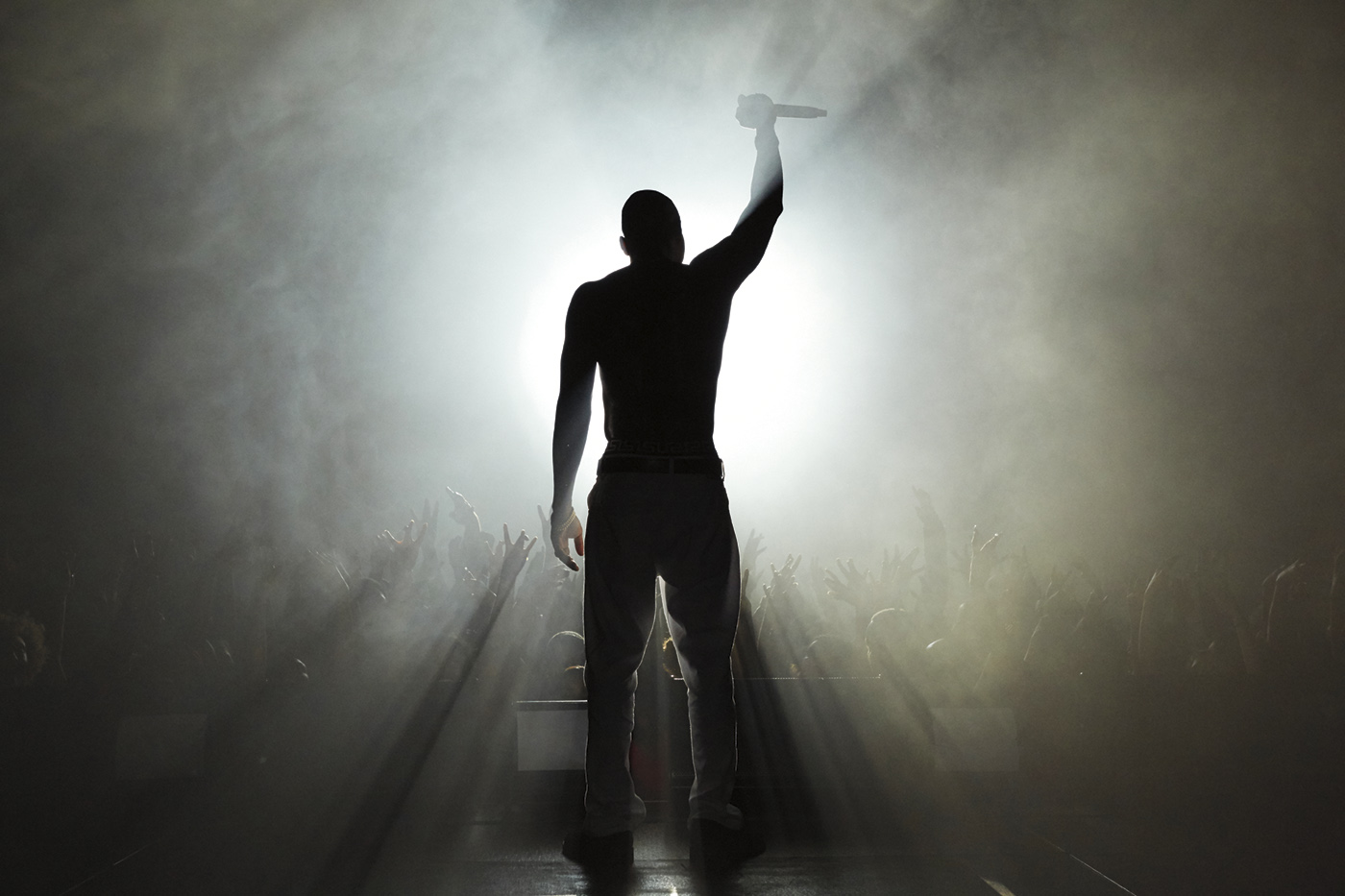Tupac Shakur’s status as myth and icon has only grown in the quarter-century since his passing. Now comes a narrative feature brash and bold enough to tell Pac’s story.
By David Geffner
Photos by Quantrell Colbert
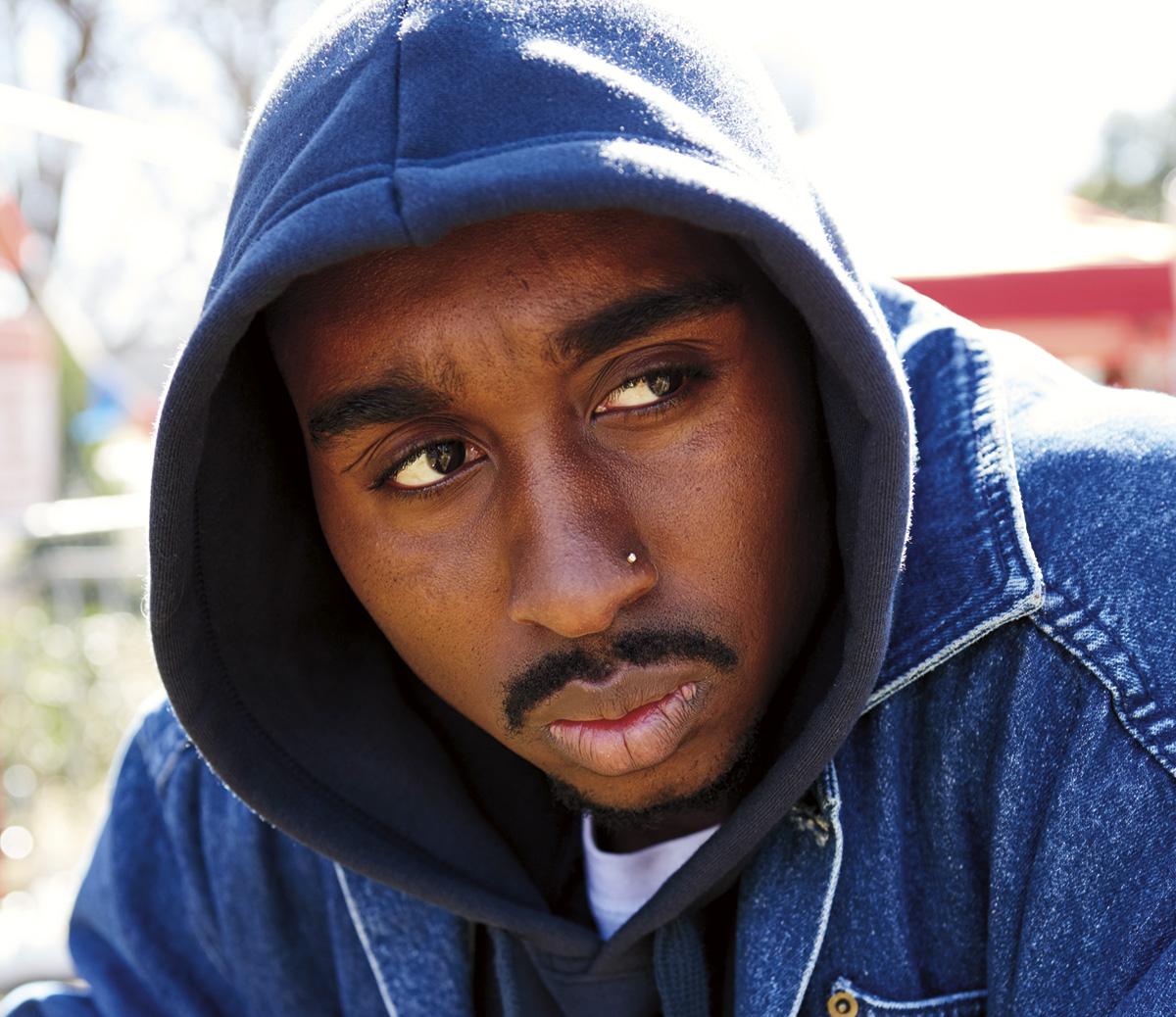
Even compared to the long list of the musical artists who “lived fast and died young,” Tupac Amaru Shakur, aka 2Pac, Makaveli, or just “Pac” jammed an incredible amount of living into his brief time on earth. Consider that by the time he was murdered in a drive-by shooting in Las Vegas at the age of 25, Shakur had already sold tens of millions of records, including his acknowledged masterpiece, All Eyez on Me (certified 9x platinum less than two years after his death.) He was also a social prophet in his teens; Shakur’s debut album, 2Pacalypse Now, released when he was just 20, was publicly censored by then Vice-President Dan Quayle for its scathing attack on police brutality.
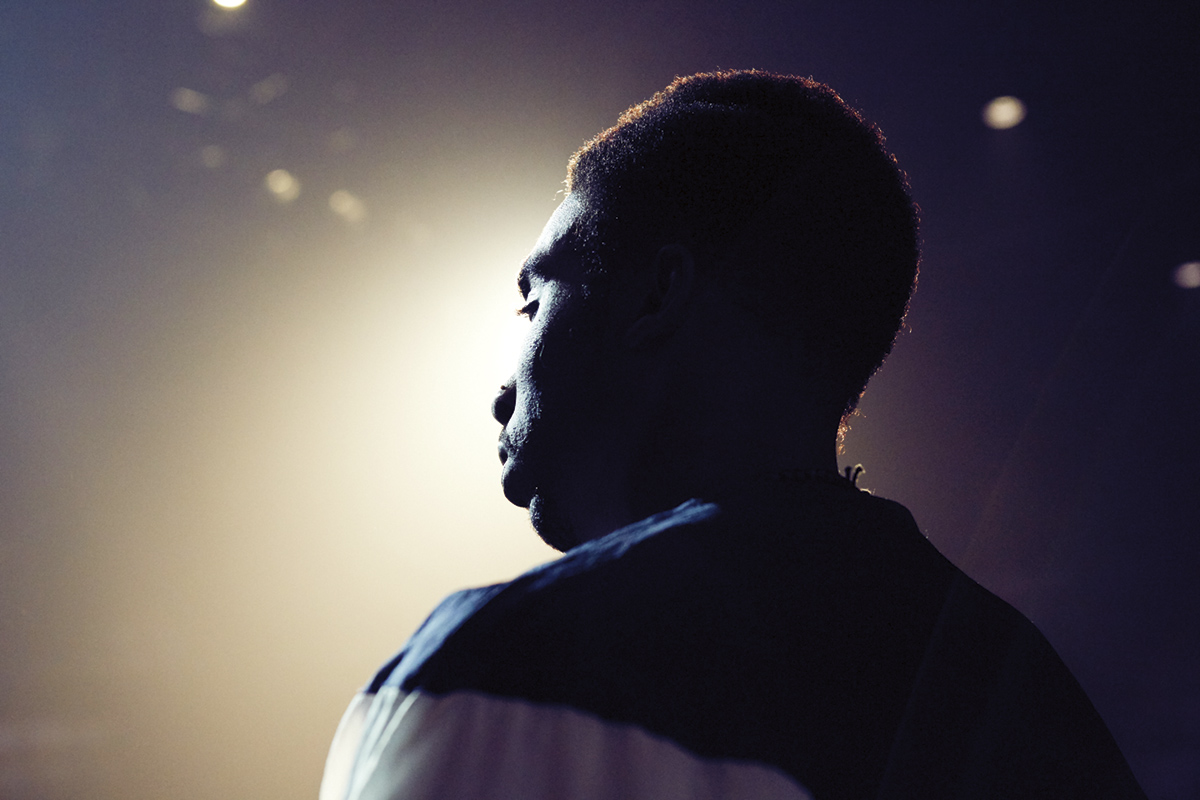
There were also acting roles in seven films, scores of references to medieval philosophy, poetry and literature in his lyrics, and enough violence and trouble with the law for several lifetimes, including the shooting of off-duty police officers in Atlanta, prison time for sexual-assault charges, and most notably, being robbed and shot five times in the lobby of a Manhattan recording studio, where his friend and later rival, Chris Wallace (Notorious B.I.G.), was working.
Rapper, poet, movie star, social iconoclast, ladies man, gangsta – there never seemed to be enough labels to describe Shakur in his short, hectic life, including those auspicious months spent pre-birth in the womb of his mother, Afeni Shakur, a Black Panther activist who was arrested on bombing-conspiracy charges (and later acquitted one month before Pac was born). Now, a quarter-century and change since his passing, comes the first narrative feature on Shakur, All Eyez on Me (Tupac: Resurrection, narrated entirely in Pac’s voice, was nominated for a Best Documentary Oscar in 2003), directed by longtime music-video filmmaker Benny Boom and produced by L.T. Hutton.
Eyez takes us all the way from the fiery social activism into which Pac was born to the final hail of bullets on a Vegas street that ultimately took his life. (Afeni told doctors to abandon life-support efforts seven days after the shooting.) Sandwiched in between, in a beautiful arc of visual styles facilitated by cinematographer Peter Menzies, Jr., ACS, and production designer Derek Hill, are scenes from a lifelong friendship with Jada Pinkett Smith, a handful of iconic musical performances at L.A.’s House of Blues, the fated connection with rap impresario Suge Knight and Death Row Records begun in prison, and, the most important person in Pac’s life, his mother, whom he forever immortalized in the single “Dear Mama,” from his 1995 album Me Against the World. In that song, Shakur, a self-described “mama’s boy,” pays tribute to the grit and fight of all single mothers struggling to raise their sons out of poverty.
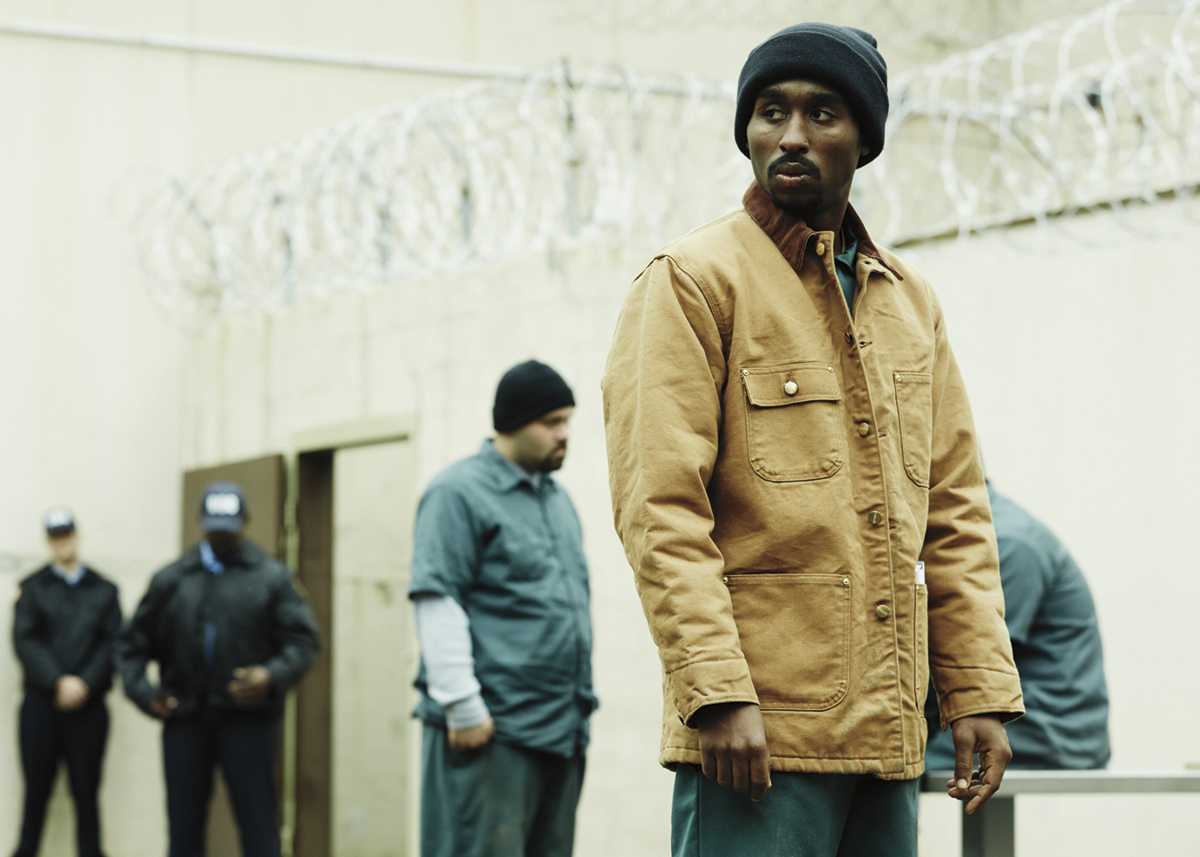
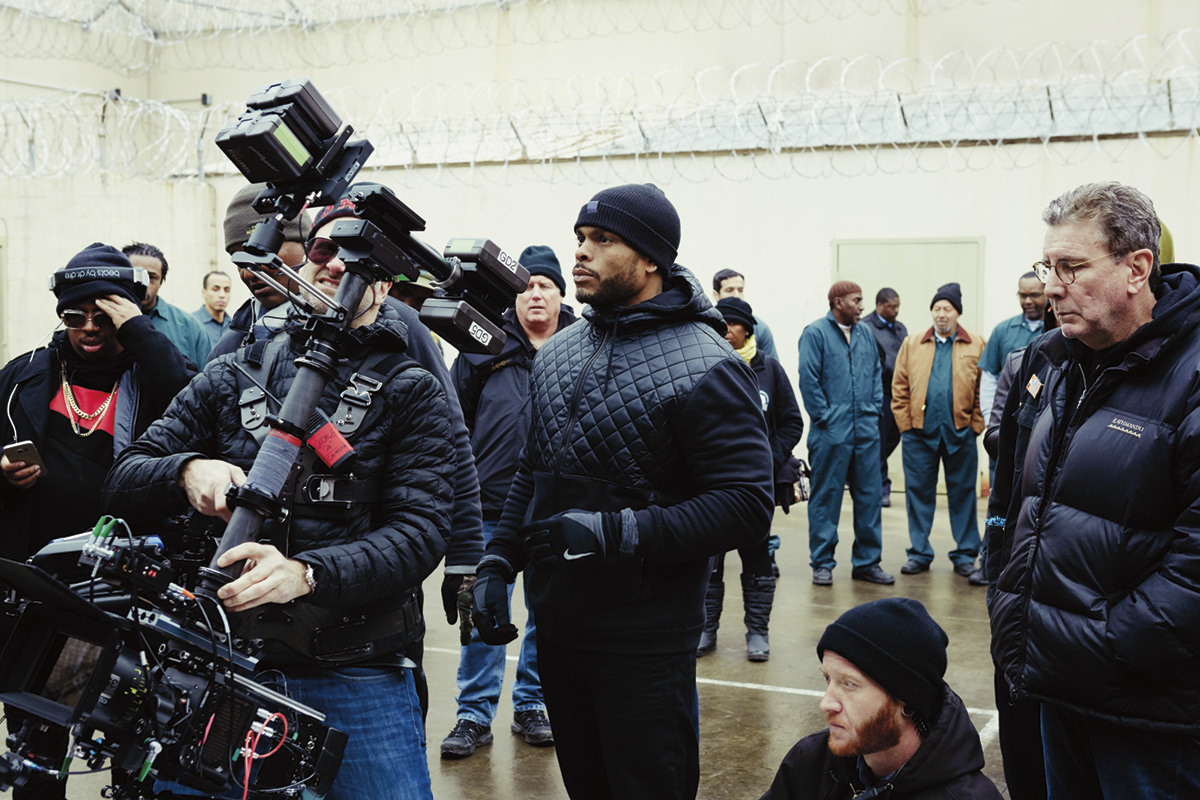
Photo Credit: Quantrell Colbert
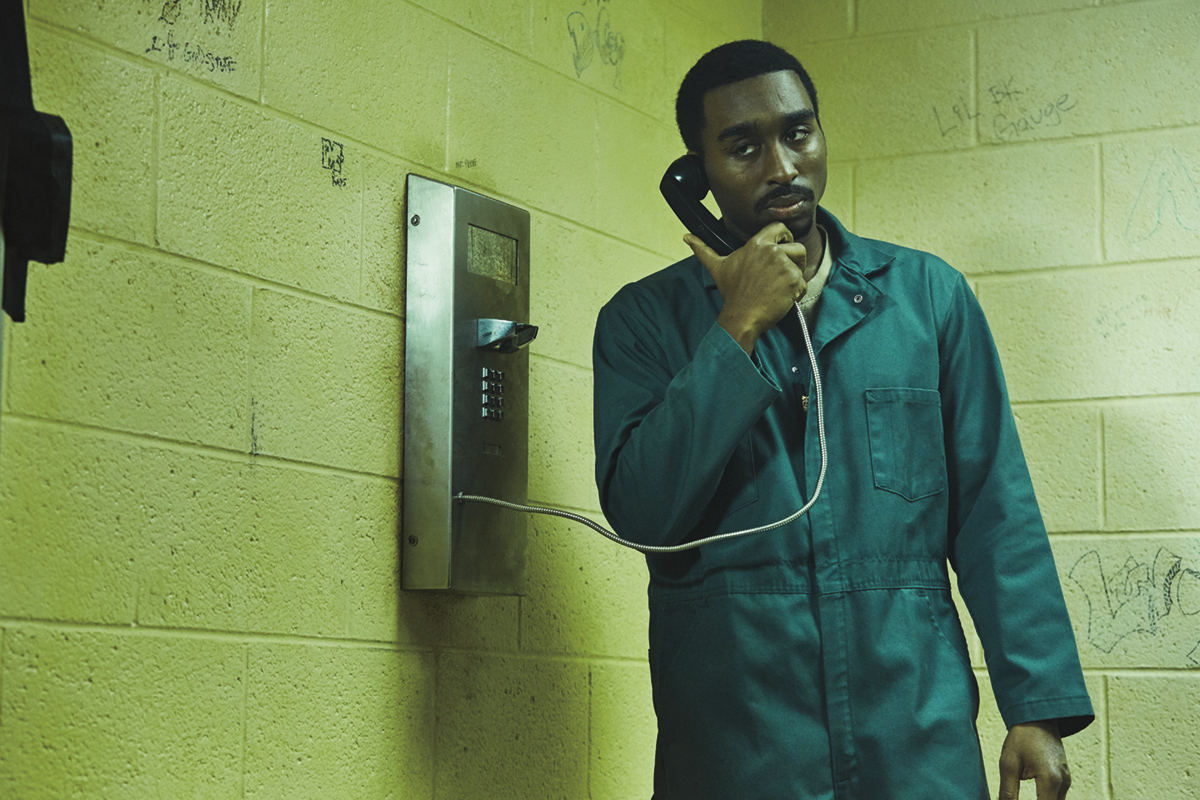
“I had just come straight off of Roots and decided to use the same 1.3 anamorphic lenses from Vantage; they’re gorgeous lenses and perfect for many of the challenges we faced on this movie,” recalls the Australia-born Menzies, whose credits include large franchise projects like Clash of the Titans and The Incredible Hulk, action dramas such as Four Brothers and Shooter, and more recently the TV movie Surviving Compton, about West Coast rapper Michel’le.”
Menzies explains that the production was required to shoot four days in Atlanta [to retain the rights to the story] before going on a short hiatus and fleshing out the visual template with Boom in preproduction. “Those four days were all dialogue when Pac’s in prison,” Menzies adds. “The scenes were key to the story, of course, because Pac’s music changed so much after his incarceration. But it was demanding on our young star [Demetrius Shipp, Jr.] straight out of the gate. My crew [including A-camera/Steadicam operator George Bianchini, SOC, A-camera 1st AC Steven Cueva, and B-camera operator Eric Wycoff] was like, ‘When are we going to get to shoot some music scenes?’ Cueva was with me on Roots and he did the most amazing job getting the package from New Orleans to Atlanta with almost no turnaround.”
“The schedule was tight, so using three cameras at once, which is how I’ve been working recently, helped Benny a lot with coverage.” -Peter Menzies, Jr., ACS
The Douglas County Jail, outside Atlanta, not only comprised Pac’s prison scenes but many other sets built by production designer Hill. Those included scenes from Shakur’s youth in a Harlem tenement, in 1975; the Indiana Black Expo, years later, which gives context to Pac’s rising social activism; and the Marin City apartment where he lived with Afeni as a teenager.
The core of Menzies’ camera package used on Roots (and then transposed to Eyez) were the 1.3 anamorphics mounted to ALEXA Studio cameras with mirror shutters. “That particular setup is the closest we can get to a film look in our digital world,” Menzies offers, “using a mechanical shutter.”
That filmic look floods through Shakur’s time in prison, where his meetings in the stripped-down visitors’ room (gaffer David McLean and his team used LED units and practical fluorescents combined with natural sunlight) included his mother and his attorney, as well as Suge Knight, the latter of whom forever altered Pac’s life. “The schedule was tight, so using three cameras at once, which is how I worked on Roots, helped Benny a lot with coverage,” Menzies continues. “After we had run through each scene with three handheld looks, we would often do a separate pass [with Bianchini] on Steadicam just to make sure the scenes all had a bit of life to them.”
Life, or rather the attempt to take it, shapes one of the most intense scenes in the movie: when Shakur is robbed and then shot five times in the lobby of Quad Recording Studios in New York City. Shooting handheld, Bianchini and his camera (with an optical flat) were shrouded in Duvetyne. To best capture POV angles of the emotionally charged incident (many in Pac’s camp suspected Biggie Smalls of setting up the ambush to look like a common robbery, with the real motive to kill), Bianchini was literally inches from the blank guns, which were popping off in his face.
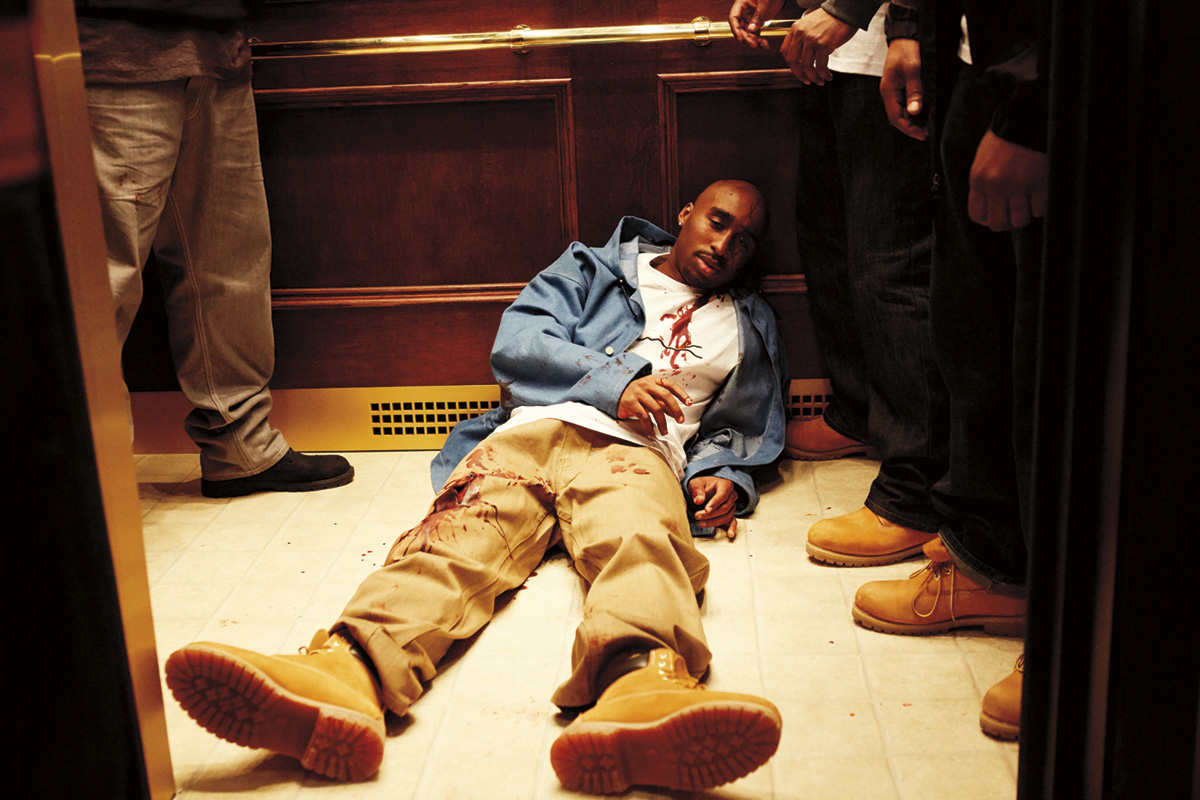
“I wore gloves and ear plugs and let the gun fire right into the lens,” the operator recounts. “I was so close I could feel the heat and compression [of the blank charges] coming through the Duvetyne. In the scene, Pac is thrown to the ground and on top of the guns going off; the actors didn’t hold anything back for realism,” he laughs. “It’s an incredibly dramatic and emotional scene and not without some safety concerns. But I just got so lost in the story I didn’t want to hold back.”
The following day, Bianchini did more POV’s for the scene that included his wearing a portion of Shipp’s wardrobe. “A few of the takes I’m wearing Pac’s pants below the waist,” he continues. “I get dragged into the elevator and I see my pants covered in blood. The goal was to capture how frightening it was for Pac to be shot at such close range. I’ve been involved in armory and gun work, but nothing at this proximity. I could feel everything through the Duvetyne, but fortunately the adrenaline took over.”
Adds Menzies, “The space was really small and confined, so the energy in the room is really communicated through the camerawork. The POV approach made things as intimate as we could possibly pull off to help the audience understand what it must have been like.” Production Designer Hill adds that his team built walls to close in the lobby of a period Walgreen’s in downtown Atlanta, used to replicate Quad Recording Studios. “We created outside signage and had the police car and ambulance come up on the curb to tighten up the shot,” he explains. “There were many different versions of what happened that night, so [for the exterior scenes] I knew if the camera kept tight, and we could provide a metal railing, the door, the ambulance up on the curb, Benny and Peter would be okay.”
Hill, whose credits include other true-life biopics like W., Into The Wild, and Born on the Fourth of July, says the key to sets and locations that must recreate real events is to offer the director enough of the reality to tell the story. For example, when Pac’s entourage gets in the fight in the MGM Grand, Hill videotaped the casino where Menzies was to shoot (Harrah’s) and compared that side-by-side to the MGM Grand video footage. “I knew it wouldn’t be exactly the same,” he adds, “but if we could get the key characters in the scene, as well as the background crowds, set up in an area that looked similar – slots, tables, et cetera – and with all the fighting and movement, that would be okay. LT Hutton was part of Pac’s core group back in those days, so I always deferred to him on the final look. If LT said it was close, then that’s what I would ultimately trust.”
Trust, in his own scrambled identity and the society that celebrated him, was a big part of Shakur’s demons. And those personality contradictions are seen in stark relief when the somber, naturalistic prison and courtroom scenes (when Pac is tried for sexual assault) are contrasted with the color-infused club and performance scenes (shot in an Atlanta warehouse to double for L.A.’s House of Blues), mainly in a marathon collaboration of lighting, camera and production design.
Menzies says Hill was “a genius” at providing so many different looks in the Douglas County Jail, as well as other Atlanta locations. “I’m a huge believer that if sets can light themselves, it provides a huge boost in flexibility and speed, especially with a limited budget and schedule,” Menzies states. In fact, the “green room,” where Jada takes Pac to task [for his immersion in thug life] after a concert [at the House of Blues], was lit almost entirely with practical units built into the set. It was amazing.”
For the HOB “green room,” Set Decorator Merissa Lombardo brought in more than a dozen period- lighting fixtures, hung from the ceiling as well as above the room’s many paintings. Hill then draped fabric on the walls and ceiling so Menzies could push in more LED light from above and behind the material. “The whole room was color-toned in deep reds and browns, much of it pulled from YouTube footage of Pac when he was performing at the House of Blues,” Hill recounts. “We put together renderings in advance to show to Benny and LT [Hutton], and then followed those pretty closely. Everything began with us painting all the walls red and took off from there.”
Practical period lighting units were also used for the concert scenes Menzies shot in front of a live audience, using seven cameras, a drone, a Technocrane, and, most importantly, music-video veteran Bianchini’s free rein on and around the stage.
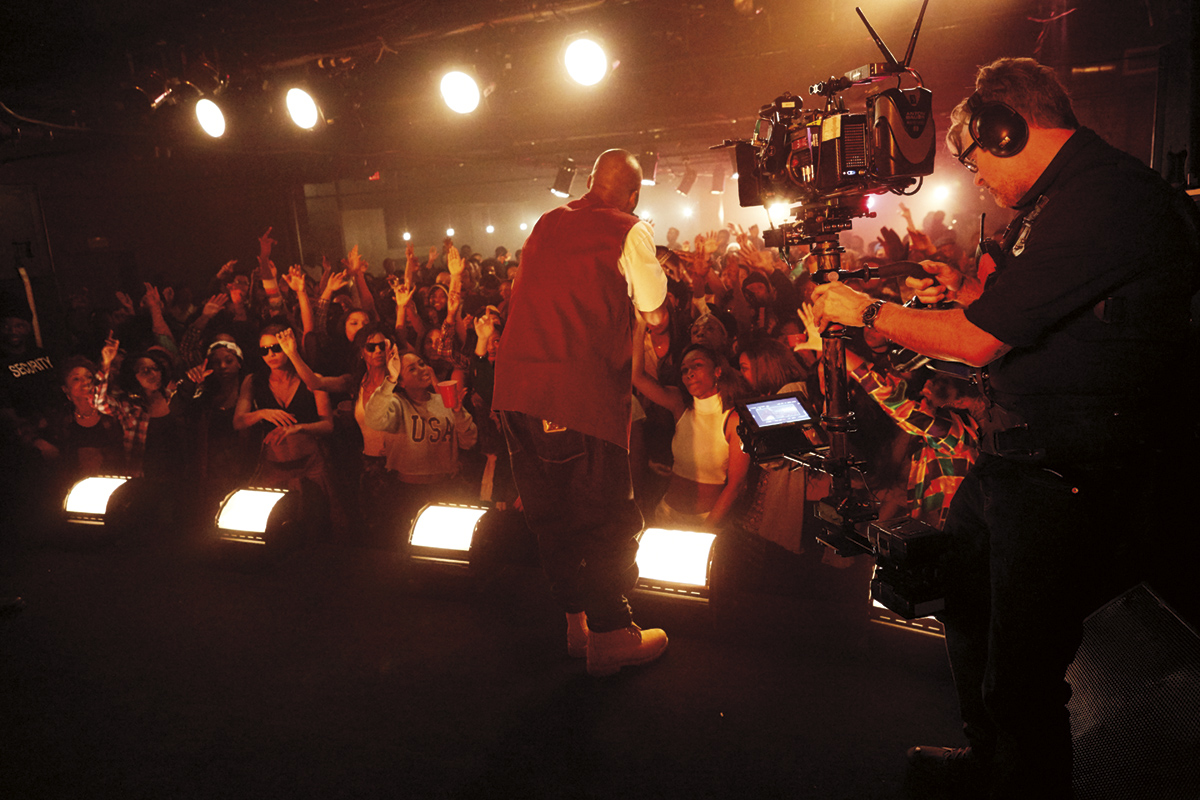
“Benny and I both come from music videos, and we’ve known each other for about 18 years,” Bianchini explains. “I worked on Benny’s directorial debut (on a music video) in 2002, so he really knew what I could do in a performance situation.” Bianchini would run through an entire 20-minute set on Eyez roaming with a Steadicam. “There were a couple of thousand people in the audience, and I know Benny loves dramatic move-ins, flares, and wrap-arounds, and Peter knew how to light for those, so I could find those moments operating,” he adds. “I can’t say enough good things about our focus puller, Steve Cueva. No matter what I threw at him, he would take the journey and nail it.”
“I know Benny loves dramatic move-ins, flares, and wrap-arounds, and Peter knew how to light for those, so I could find those moments operating.” -George Bianchini, SOC
For the concert footage, Bianchini was using the lighter ALEXA MINI with the Vantage anamorphic primes. Variation was key (using a static prime focal length), so, he relates, “I was pretty much moving all the time, throwing focus back and forth from foreground to back. A lot of the time I would let Steve dictate where the camera went. When I saw his focus went deep, I would frame for deep and move closer. I never got to work with Pac directly, but I got my start with Hype Williams, who had directed Pac’s famous ‘California Love’ video. The opportunity to recreate Pac’s early Digital Underground video for this movie, which we tried to do frame for frame, was really a blast.”
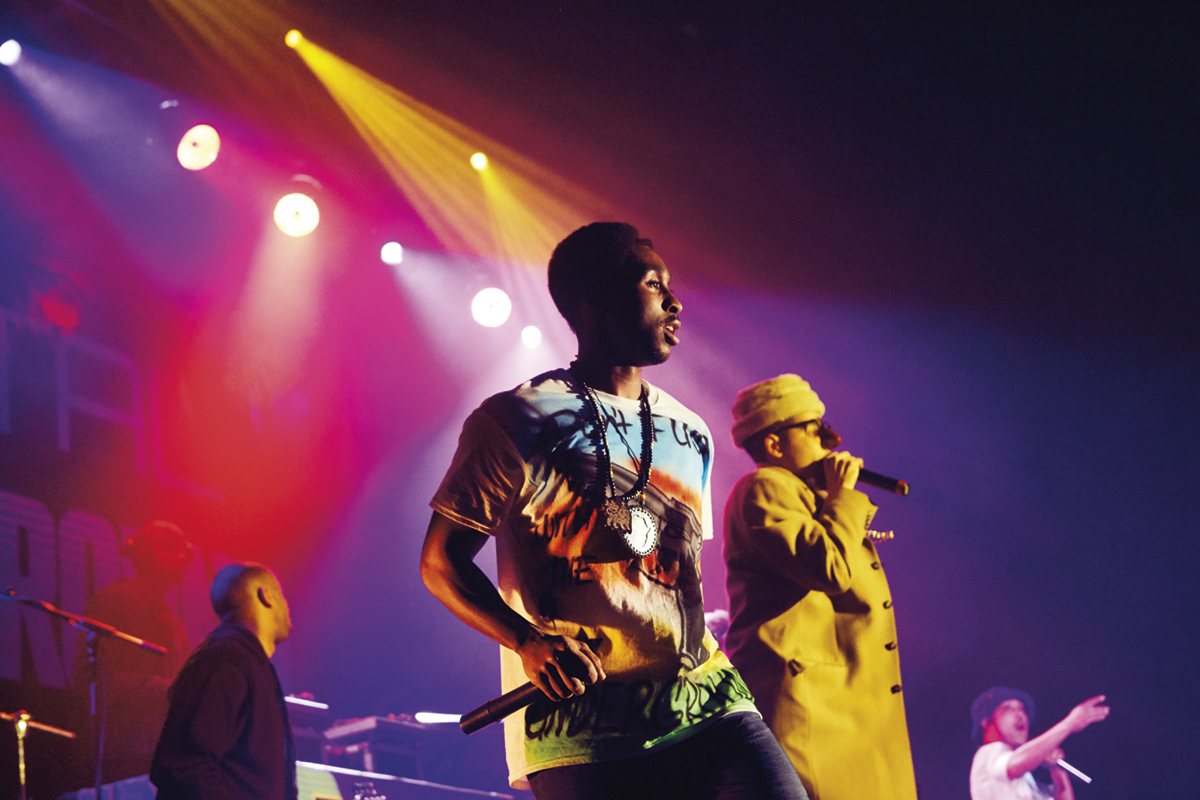
Menzies, too, had shot many music videos earlier in his career, as well as live concerts. “Using all period lighting elements for the concert scenes provided a lot of options with color temperature. For the first show, we had a lot of moving lights and color changes, and that went into a whole red look for ‘Hail Mary.’ David [McLean] worked with PRG in Atlanta, and they had plenty of those old [PAR can] lights sitting around, since nearly everyone has moved into LED’s. We used an interior drone as well for these scenes to give some speed and pace to the high wide shots, which we couldn’t really get with the crane.”
With roughly 70 percent of the film being shot handheld, Bianchini says it was essential he memorize the entire script, to always account for where the camera needs to be in relation to the dialogue. “There would be scenes where there wasn’t any coverage at all,” the operator continues, “and Benny and Peter would just want the camera to be ‘swingling,’ i.e., swinging into singles. We wanted to make the handheld as much like Steadicam or a dolly as possible. Smooth and clean that doesn’t call attention to itself.”
Such was the approach for many of the earlier scenes in Pac’s life –– waterside with a young Jada Pinkett in Baltimore, or when the FBI bursts into Afeni’s Bay Area apartment to arrest Pac’s stepfather, Mutulu, a prominent Black Panther who had spent years on the FBI’s Ten Most Wanted Fugitives list.
The dramatic final moments of Shakur’s life, which begin with Pac, Knight and their entourage attacking an L.A. Crips gang member in the lobby of the MGM Grand Hotel and culminates with a hail of bullets to the passenger side of Knight’s BMW sedan, where Pac was riding, were shot on an Atlanta stage, with Menzies using large LED screens (from PRG Atlanta). The plates for the stagework were shot in Vegas with nine cameras (to provide a 360-degree view). The route the plate car followed exactly matched the journey Knight’s BMW took that fateful September night.
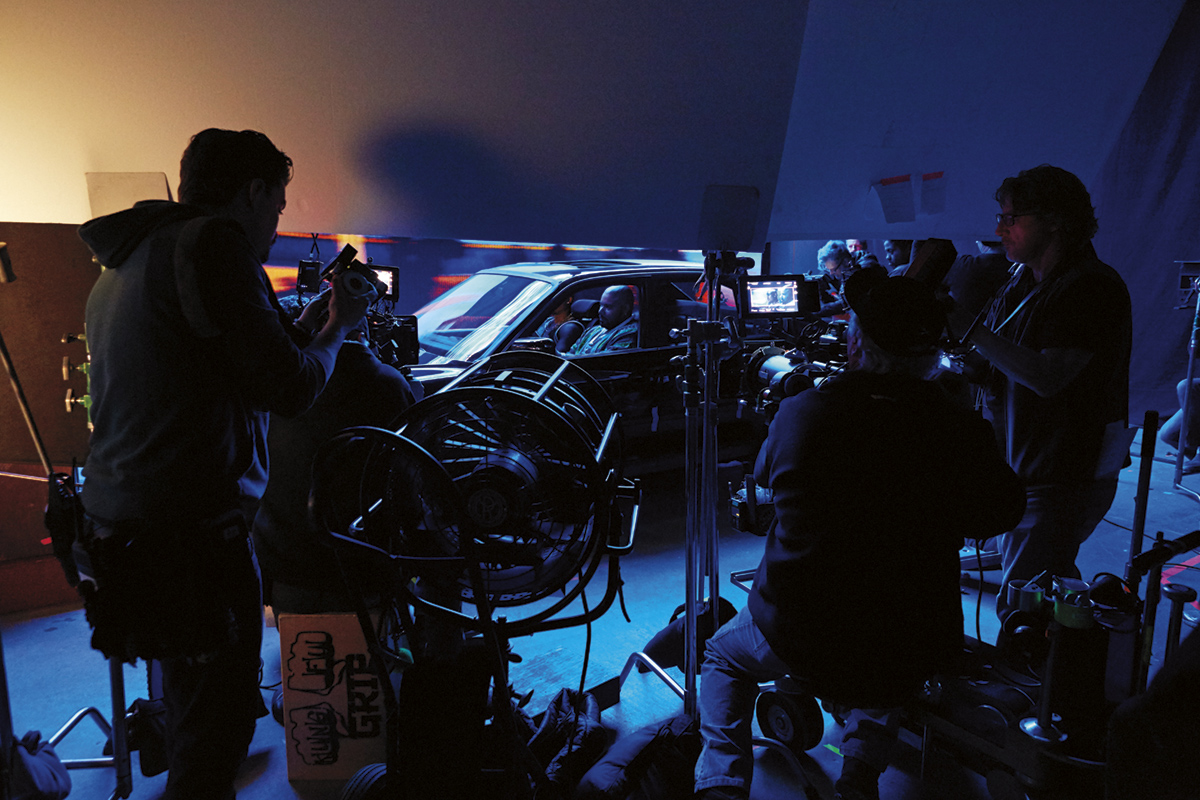
Back on the stage, Menzies used two LED screens on the floor and one suspended above his car. “We did all the tight coverage on stage using the screens and plates, and then went to Vegas to do the wider shots,” he notes. “The LED screens were quite amazing – they were 30 feet by 15 feet and could light the whole set.”
The original plan was to shoot Pac’s car with green screen, but Menzies says the LED screens offered a more “organic and interactive” approach to the long, slow cruise through the Vegas night. “The LEDs were programmable, of course, so we could reproduce the way the actual ambient light from the Vegas strip would grow and wane, changing as the car drove,” Menzies adds. “It was the first time I used LED walls of this magnitude, and it allowed for great flexibility, as I could still use three cameras at once, just like the rest of the movie.”
Menzies took a similar approach for a scene where Pac is talking with Biggie Smalls on the balcony of a New York City building. “We shot the scene on stage against translights,” the DP continues. “[The translights] are so much better for the actors than green screen, as [the actors] can walk out onto the balcony and see [a facsimile] of New York City right there behind them. Of course, the translights have limitations, and we will be adding the odd CG airplane and light twinkles as needed. But I’ve done an awful lot of blue and green screen in my career, and I always prefer going in-camera whenever possible.”
CREW LIST
Director of Photography
Peter Menzies Jr., ACS
A-Camera Operator/Steadicam
George Bianchini, SOC
A-Camera 1st Assistant
Steven Cueva
A-Camera 2nd Assistant
Megan Morris
B-Camera Operator
Eric Wycoff
B-Camera 1st Assistant
Nino Neuboeck
B-Camera 2nd Assistant
Mike Fisher
C-Camera Operator
Keith Peterman
C-Camera 1st Assistant
Mark Boyle
C-Camera 2nd Assistant
Kyler Dennis
DIT
Jason Bauer
Digital Loader
Manny Serrano
Digital Utility
Jimari Jones
Still Photographer
Quantrell “Q” Colbert
